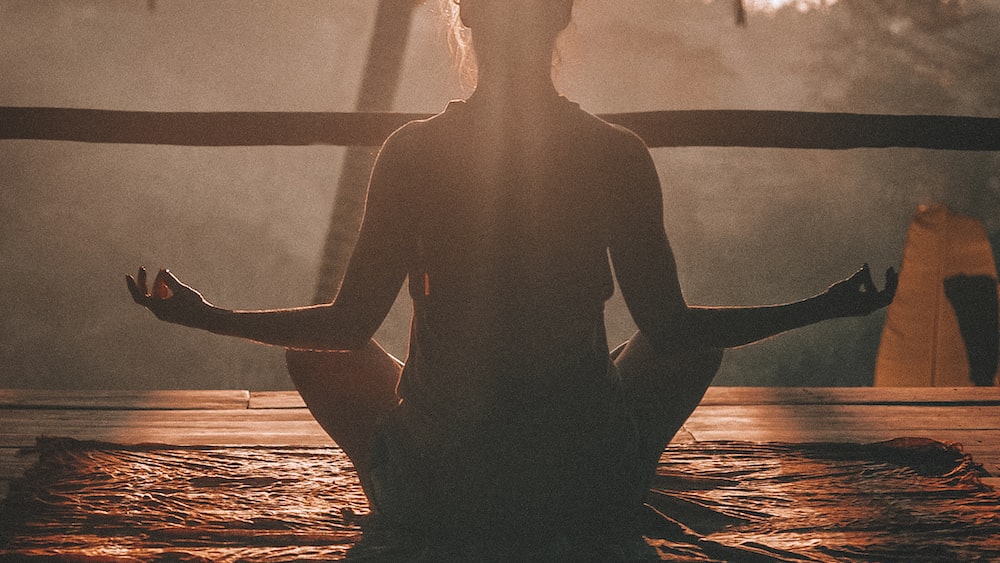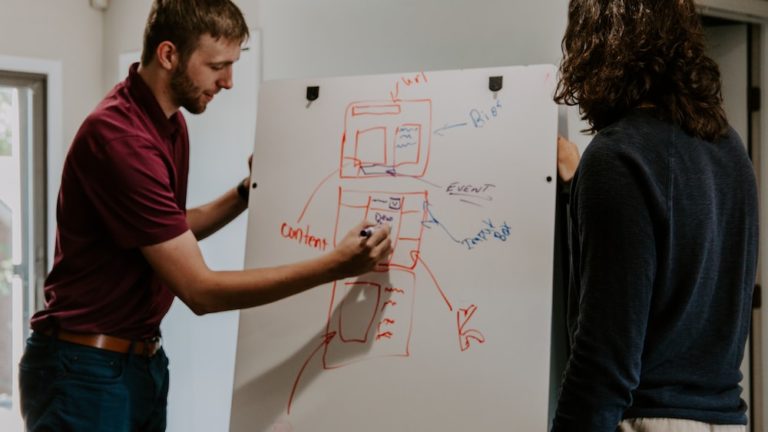9 Effective Mindfulness Strategies For Daily Bliss
Hey there! Are you on a quest for daily bliss and personal growth? You’re in the right place! In this article, we’ll be exploring 9 effective mindfulness strategies that can help you achieve a more balanced and fulfilling life. So, buckle up and get ready for a journey to self-improvement.
The beauty of mindfulness is that it can be practiced in various aspects of our lives, from personal growth to daily activities and emotional well-being. Research shows that mindfulness can reduce stress, improve focus, and increase overall happiness. So, why not give it a try? Let’s dive into these transformative strategies and start creating a life filled with joy and inner peace.
Mindfulness Strategies for Personal Growth
Personal growth is the foundation of a happy and successful life. It’s time to take a closer look at some mindfulness strategies that can help you on your journey towards self-improvement and personal development.
1. Practicing Gratitude
Practicing gratitude is one of the most powerful ways to cultivate mindfulness and happiness. It’s about acknowledging and appreciating the good things in your life, rather than focusing on the negative. Studies show that people who regularly practice gratitude experience higher levels of positive emotions, greater life satisfaction, and stronger social connections.
To get started, try keeping a gratitude journal where you write down three things you’re grateful for each day. This simple exercise can shift your focus from what’s wrong to what’s right in your life, creating a more positive and mindful mindset.
Practicing gratitude regularly can increase positive emotions, life satisfaction, and social connections by acknowledging and appreciating the good things in your life through a simple exercise like keeping a gratitude journal.
2. Mindful Breathing Techniques
Mindful breathing is a cornerstone of mindfulness practice. It involves paying attention to your breath as it flows in and out of your body. By focusing on your breath, you can anchor your mind in the present moment and create a sense of calm and clarity.
There are various mindful breathing techniques to explore, such as:

- Counting your breaths: Inhale deeply and exhale fully, counting each breath until you reach ten, then start again at one.
- 4-7-8 breathing: Inhale for a count of 4, hold your breath for a count of 7, and exhale for a count of 8.
- Box breathing: Inhale for a count of 4, hold your breath for a count of 4, exhale for a count of 4, and hold your breath again for a count of 4.
Try incorporating one or more of these techniques into your daily routine, and notice the difference it makes in your mood and focus.
3. Body Scanning Meditation
Body scanning meditation is another powerful mindfulness practice that can help you connect with your body and release tension. It involves systematically focusing on different parts of your body, from head to toe, and observing any sensations, emotions, or thoughts that arise.
To practice body scanning, find a comfortable position, and begin by taking a few deep breaths. Then, slowly bring your attention to each part of your body, starting with your toes and working your way up to your head. As you do this, notice any areas of tension or discomfort, and try to release them with each exhale.
Mindfulness Strategies for Daily Activities
Incorporating mindfulness into our daily activities can transform mundane tasks into opportunities for personal growth and stress reduction. Let’s explore some strategies to help you become more present and engaged in your daily life.
4. Mindful Eating
Mindful eating is a practice that encourages you to focus on the experience of eating, savoring each bite, and appreciating the flavors, textures, and smells of your food. It’s about being fully present during meals, rather than eating mindlessly or on autopilot.
To practice mindful eating, try the following tips:
- Eliminate distractions: Turn off the TV, put away your phone, and find a quiet space to enjoy your meal.
- Take smaller bites: This allows you to savor each mouthful and eat at a slower pace.
- Chew thoroughly: Chewing not only aids digestion but also helps you appreciate the flavors and textures of your food.
By incorporating these simple practices into your mealtimes, you’ll likely find yourself enjoying your meals more and feeling more satisfied and nourished.
5. Mindful Driving
Mindful driving is an often overlooked but powerful way to integrate mindfulness into our daily routines. Just think about how much time we spend in our cars, whether it’s commuting to work or running errands. By bringing awareness to this everyday activity, we can transform it into a source of mental peace and clarity.
To practice mindful driving, start by focusing on your breath as you enter your vehicle. Feel the sensation of the seat against your body and the steering wheel in your hands. As you begin driving, pay attention to the road and your surroundings, while also noticing any thoughts or emotions that may arise. If your mind wanders, gently bring it back to the present moment and the act of driving. Remember, the goal is not to eliminate thoughts but to observe them without judgment.

Practicing mindful driving can lead to numerous benefits, including reduced stress, increased focus, and a better overall driving experience. Plus, it’s an easy way to incorporate mindfulness into your daily life without carving out extra time for meditation or other practices.
6. Single-Tasking and Focused Attention
In our fast-paced world, multi-tasking has become the norm. But research shows that single-tasking can actually be more productive and efficient. By focusing on one task at a time, we can give it our full attention and complete it more effectively. So, how can we cultivate single-tasking and focused attention?
- Create a distraction-free environment: Minimize noise, close unnecessary tabs or applications on your computer, and set your phone to “Do Not Disturb.”
- Prioritize your tasks: Choose the most important task to work on first, and break it down into smaller, manageable steps.
- Set a timer: Use the Pomodoro Technique or another time management method to work in focused intervals, followed by short breaks.
By practicing single-tasking and focused attention, we can not only improve our productivity but also develop a deeper sense of mindfulness as we fully engage with each task. This can lead to increased satisfaction and a sense of accomplishment in our daily lives.
Creating a distraction-free environment, prioritizing tasks, and setting a timer are effective ways to cultivate single-tasking and focused attention, leading to increased productivity and a deeper sense of mindfulness.
Mindfulness Strategies for Emotional Well-being
Our emotional well-being is just as important as our physical health, and mindfulness can play a significant role in nurturing it. By becoming more in tune with our emotions and learning to respond to them in a healthy way, we can cultivate a more balanced and fulfilling life. Let’s explore some strategies that can help us achieve this.
7. Self-Compassion and Acceptance
Self-compassion is a critical component of emotional well-being. It involves treating ourselves with kindness, understanding, and acceptance, especially during difficult times. Research has shown that self-compassion can lead to greater resilience, reduced stress, and improved mental health. Here are some ways to cultivate self-compassion and acceptance:
- Practice loving-kindness meditation: This form of meditation involves silently repeating phrases like “May I be happy, may I be healthy, may I be safe, may I be at ease,” which can help to generate feelings of warmth and compassion towards ourselves and others.
- Acknowledge and validate your emotions: Instead of suppressing or denying your feelings, recognize them for what they are and allow yourself to experience them fully.
- Reframe negative self-talk: When you catch yourself engaging in harsh self-criticism, try to replace it with more compassionate and understanding language.
8. Mindful Movement and Exercise
Mindful movement is a powerful way to connect with our bodies and emotions, helping us to cultivate emotional well-being. Activities like yoga, tai chi, or even simply taking a mindful walk can promote relaxation, stress reduction, and a greater sense of self-awareness.
When engaging in mindful movement or exercise, focus on your breath and the sensations in your body. Pay attention to how your muscles feel as they stretch and contract, and observe any emotions that may arise during the activity. By doing so, you’re not only benefiting your physical health but also nurturing your emotional well-being.
9. Art-Based Mindfulness Activities
Art-based mindfulness activities, such as painting, drawing, or sculpting, can be a powerful way to engage with our emotions and cultivate emotional well-being. These creative outlets allow us to express ourselves, process our feelings, and connect with the present moment.
To practice art-based mindfulness, choose an activity that resonates with you, and set aside some dedicated time to engage with it fully. Focus on the process of creating, rather than the final product, and allow yourself to be fully present in the moment.

As you immerse yourself in the creative process, you may find that it becomes a form of meditation, helping you to cultivate a sense of calm, focus, and emotional balance. Plus, you’ll have the added benefit of creating something beautiful and unique, which can be a source of joy and satisfaction.
FAQs
1. How long should I practice mindfulness each day?
How long you should practice mindfulness each day really depends on your personal preference and schedule. However, experts recommend starting with at least 10-20 minutes daily for beginners to experience the benefits of mindfulness.
2. Can mindfulness help with anxiety and stress?
Absolutely! Mindfulness has been proven to help with anxiety and stress. Research has shown that practicing mindfulness regularly can reduce stress levels, lower blood pressure, and improve overall mental well-being.
3. Are there any mindfulness apps or resources I can use?
Yes, there are numerous mindfulness apps and resources available to help you practice mindfulness. Some popular options include Headspace, Calm, Insight Timer, and 10% Happier. These apps offer guided meditation sessions, reminders, and other tools that can help you incorporate mindfulness into your daily life.
4. How can I incorporate mindfulness into my daily routine?
Incorporating mindfulness into your daily routine can be done in various ways. You can start by setting aside a specific time each day for mindfulness practice, such as meditation or mindful breathing. Additionally, you can practice mindfulness during everyday activities like eating, driving, or even while working by focusing on the present moment and fully engaging your senses.
Conclusion
In conclusion, mindfulness is a powerful tool that can transform your daily life and improve your overall well-being. By incorporating the strategies mentioned above, you can experience increased focus, reduced stress, and a greater sense of inner peace.
Remember, the key to successful mindfulness practice is consistency. Don’t be too hard on yourself if you miss a day or two; instead, gently return to your practice and keep moving forward. As you continue to practice mindfulness, you’ll develop a deeper connection with yourself and a greater understanding of your emotions and thoughts.
So, why wait to start experiencing daily bliss? Begin implementing these mindfulness strategies today and watch as your life blossoms into a more fulfilling, joyful, and balanced existence. And remember, you’re not alone on this journey; there’s a whole community of mindful individuals out there, just like you, striving to live their best lives.
Happy practicing!
I wish you the best! Fabian.
Share with your Friends:






